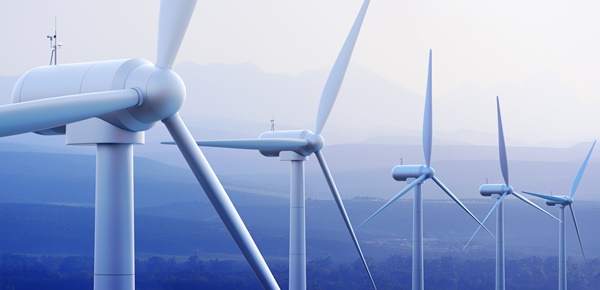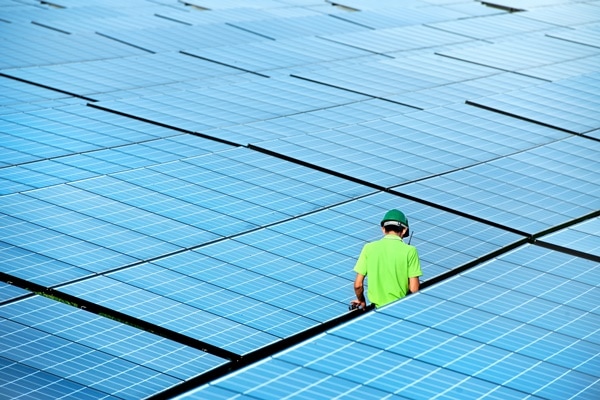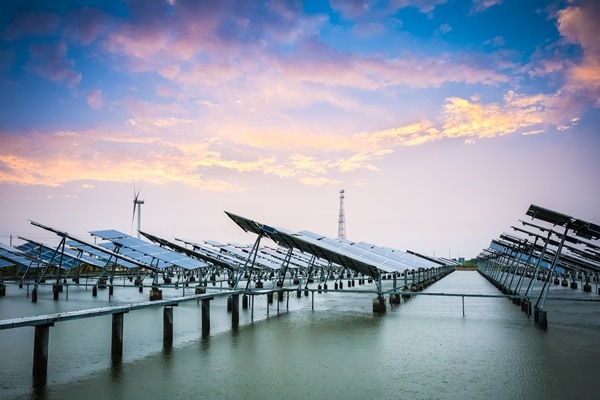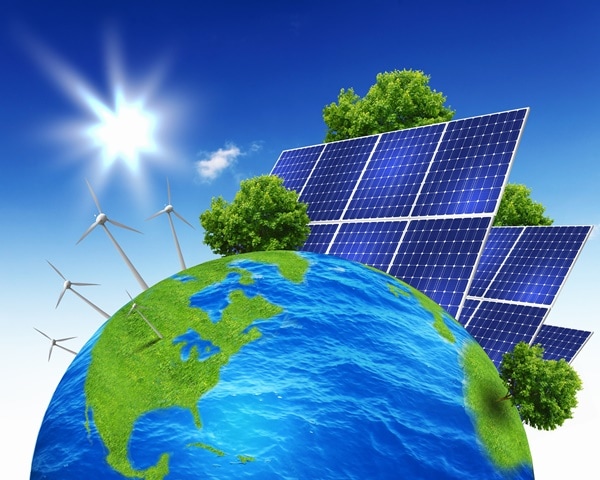ทิศทางการลงทุนทางเทคโนโลยีพลังงานสะอาดในปี 2019
Article by : Pornphimol Winyuchakrit (Ph.D.)
Sustainable Energy and Low Carbon Research Unit
Sirindhorn International Institute of Technology, Thammasat University
“พลังงานสะอาด” หมายถึง พลังงานที่ไม่ก่อให้เกิดมลภาวะหรือผลกระทบต่อสิ่งแวดล้อม แต่เมื่อกล่าวถึงคำว่า “พลังงานสะอาด” จะให้ความหมายที่กว้างกว่าคำว่า “พลังงานทดแทน” หรือ “พลังงานทางเลือก” ยกตัวอย่างเช่น เมื่อเรากล่าวถึงเทคโนโลยีถ่านหินสะอาด หรือเทคโนโลยีการใช้ถ่านหินร่วมกับระบบกักเก็บคาร์บอน ซึ่งมีระบบช่วยลดมลพิษที่เกิดจากการเผาไหม้ถ่านหิน นั่นก็ถือว่าเป็นพลังงานสะอาดเช่นกัน แต่ทว่าไม่ใช่พลังงานทดแทน ดังนั้น คำว่า “พลังงานสะอาด” จึงมีนิยามที่ค่อนข้างกว้างและครอบคลุมในทางเทคโนโลยีมากกว่าคำว่า พลังงานทดแทน
ทำไมจึงต้องการพลังงานสะอาด
เป็นที่ทราบกันดีอยู่แล้วในปัจจุบันว่าทั่วโลกมีความตื่นตัวและตระหนักถึงความสำคัญของการใช้พลังงานสะอาดเพิ่มขึ้นอย่างมาก ด้วยเหตุผลที่ว่าปริมาณของพลังงานฟอสซิลที่มีอยู่ตามธรรมชาติในโลกกำลังมีปริมาณลดลงอย่างต่อเนื่องจากความต้องการใช้ที่เพิ่มมากขึ้นทุกวัน ประกอบกับการเผาไหม้เชื้อเพลิงฟอสซิลเป็นจำนวนมากตั้งแต่อดีตเป็นต้นมา เป็นสาเหตุหลักที่ก่อให้เกิดการเปลี่ยนแปลงสภาพภูมิอากาศและส่งผลต่อการเพิ่มขึ้นของอุณหภูมิเฉลี่ยของโลก และยังไม่นับเรื่องการปล่อยมลพิษหรือการสร้างมลภาวะต่างๆ ดังเช่น ปัญหาของฝุ่นละอองขนาดเล็กกว่า 2.5 ไมครอน หรือ PM 2.5[1] ที่มีค่าสูงเกินค่ามาตรฐานซึ่งมีสาเหตุหลักเกิดจากการเผาไหม้เชื้อเพลิงฟอสซิลในยานยนต์และโรงงานอุตสาหกรรมตามเมืองใหญ่ต่างๆ ทั่วโลก ไม่เว้นแม้แต่ประเทศไทย โดยเฉพาะในพื้นที่กรุงเทพมหานครและปริมณฑล สระบุรี ชลบุรี ระยอง ราชบุรี เชียงใหม่ เป็นต้น

ทิศทางนโยบายพลังงานไทยกับการลงทุนด้านพลังงานสะอาด
จากประเด็นดังกล่าวการส่งเสริมการใช้พลังงานที่มีความสะอาดและไม่ส่งผลกระทบต่อมลภาวะทางสิ่งแวดล้อมจึงเป็นเรื่องที่ได้รับการส่งเสริมมาอย่างต่อเนื่องทั่วโลกรวมทั้งประเทศไทย
ในช่วง 2–3 ปีที่ผ่านมาการส่งเสริมการใช้พลังงานสะอาดของประเทศไทยมีเป้าหมายตามแผนพัฒนาพลังงานทดแทนและพลังงานทางเลือก
หรือ AEDP มุ่งเน้นการใช้พลังงานชีวมวล แสงอาทิตย์ ลม และน้ำ
ในการผลิตไฟฟ้าและความร้อน
ซึ่งในระยะเวลาที่ผ่านมาการส่งเสริมการใช้พลังงานแสงอาทิตย์เพื่อผลิตไฟฟ้าถือว่าประสบความสำเร็จมากพอสมควร
แสดงให้เห็นว่าแนวทางการส่งเสริมการใช้พลังงานสะอาดในประเทศไทยมีทิศทางและความชัดเจนที่ดีมากขึ้น
โดยเฉพาะการผ่านข้อเสนอการติด “โซลาร์รูฟ” ผลิตไฟฟ้าแสงอาทิตย์เสรี
รวมทั้งการขยายโครงข่ายระบบสมาร์ทกริดของประเทศไทยช่วยกระตุ้นให้ภาคประชาชนเข้ามามีส่วนร่วมในการผลิตไฟฟ้ามากขึ้น

นอกจากนี้ เมื่อปลายเดือนมกราคมที่ผ่านมา คณะกรรมการนโยบายพลังงานแห่งชาติ (กพช.) มีมติเห็นชอบแผนพัฒนากำลังผลิตไฟฟ้าของประเทศไทย พ.ศ. 2561-2580 หรือ PDP2018 ซึ่งมีเป้าหมายของการผลิตไฟฟ้าจากพลังงานแสงอาทิตย์เพิ่มขึ้น ในขณะที่แผนการผลิตไฟฟ้าจากพลังงานชีวมวล ลม และน้ำ มีเป้าหมายลดลงจากเดิม ในขณะที่กรมพัฒนาพลังงานทดแทนและอนุรักษ์พลังงานกำลังดำเนินการปรับแผนพัฒนาพลังงานทดแทนและพลังงานทางเลือก (AEDP 2018 ) ให้สอดรับกับแผน PDP ฉบับใหม่ นั่นหมายความว่านโยบายการส่งเสริมการผลิตไฟฟ้าจากพลังงานแสงอาทิตย์และตลาดการลงทุนด้านพลังงานแสงอาทิตย์มีแนวโน้มที่จะได้รับการพัฒนาเพิ่มมากขึ้นเพื่อให้สามารถบรรลุเป้าหมายการผลิตไฟฟ้าจากแหล่งพลังงานดังกล่าวได้มากยิ่งขึ้น

แนวโน้มการพัฒนาเทคโนโลยีพลังงานสะอาดต่ออุตสาหกรรมการผลิต
อย่างไรก็ตาม เป็นที่แน่นอนว่าเมื่อเรากล่าวถึงระบบการผลิตพลังงานแล้ว ระบบกักเก็บพลังงานก็เป็นอีกเรื่องหนึ่งที่จะไม่กล่าวถึงไม่ได้ จากการเริ่มส่งเสริมให้ผู้ใช้ไฟฟ้าสามารถมีบทบาทในการผลิตไฟฟ้า โดยผู้ใช้ไฟฟ้าสามารถบริหารจัดการการใช้พลังงานไฟฟ้าที่ผลิตได้ให้เหมาะสมกับพฤติกรรมการใช้ไฟฟ้าของตนเอง ซึ่งระบบกักเก็บพลังงานที่สามารถช่วยกักเก็บไฟฟ้าส่วนเกินที่ระบบผลิตได้แต่ไม่ได้ถูกนำไปใช้งานให้สามารถเก็บไว้ใช้ในช่วงเวลาที่ต้องการได้จะช่วยให้สามารถบริหารจัดการการใช้พลังงานได้อย่างมีประสิทธิภาพ ซึ่งนั่นไม่เพียงแต่ประเทศไทยเท่านั้นที่มีความตื่นตัวที่จะพัฒนาระบบดังกล่าวนี้ ตลาดพลังงานทดแทนหรือพลังงานสะอาดทั่วโลกต่างก็ดำเนินไปในทิศทางเดียวกัน จากข้อมูลด้านล่างจะเห็นได้ว่าแม้ว่าทิศทางของการพัฒนาพลังงานทดแทนในหลายประเทศ จะมุ่งเน้นไปที่พลังงานแสงอาทิตย์และพลังงานลมเป็นหลักซึ่งเป็นแหล่งพลังงานที่หาได้ง่ายและไม่จำกัด แต่หลายประเทศ อาทิ สหรัฐอเมริกา จีน เบลเยี่ยม เป็นต้น ที่มีการพัฒนาทางเทคโนโลยีดังกล่าวไปมากแล้วจะเริ่มมุ่งเน้นที่จะพัฒนาระบบกักเก็บพลังงานแทน ดังนั้น การพัฒนาระบบกักเก็บพลังงานที่สามารถเก็บพลังงานได้ในปริมาณมากและมีการชาร์จประจุได้อย่างรวดเร็วจึงเป็นประเด็นที่ท้าทายอย่างมากประเด็นหนึ่งสำหรับภาคอุตสาหกรรมการผลิตที่ควรวางแผนการพัฒนาและวางแผนระบบการผลิตเพื่อรองรับความต้องการที่มีแนวโน้มจะเพิ่มมากขึ้นในอนาคต

ที่มา: Deign, J., “29 Renewable Energy Markets You Need to Watch Out for in 2019”. Retrieved January 30, 2019, from https://www.greentechmedia.com/articles/read/29-renewable-energy-markets-you-need-to-watch-out-for-in-20191#gs.i5vIARny
[1] การเผาไหม้ไม่เพียงเฉพาะเชื้อเพลิงฟอสซิลแต่การเผาไหม้ขยะหรือใบไม้ในพื้นที่โล่งแจ้งสามารถก่อให้เกิด PM 2.5 ได้เช่นกัน การเกิดปัญหาฝุ่นละออง PM 2.5 ที่มีค่าสูงเกินค่ามาตรฐานจะเกิดขึ้นในช่วงที่มีสภาพอากาศนิ่ง ลมสงบ และชั้นอากาศผกผันใกล้พื้นดิน ทำให้มลพิษทางอากาศเกิดการสะสมตัวในปริมาณมาก ปรากฏการณ์ดังกล่าวจะพบเป็นบางวันในช่วงฤดูหนาวถึงต้นฤดูร้อน ซึ่งเป็นสาเหตุสำคัญที่ทำให้ระดับ PM 2.5 สูงขึ้นผิดปกติในช่วงเวลาดังกล่าว












